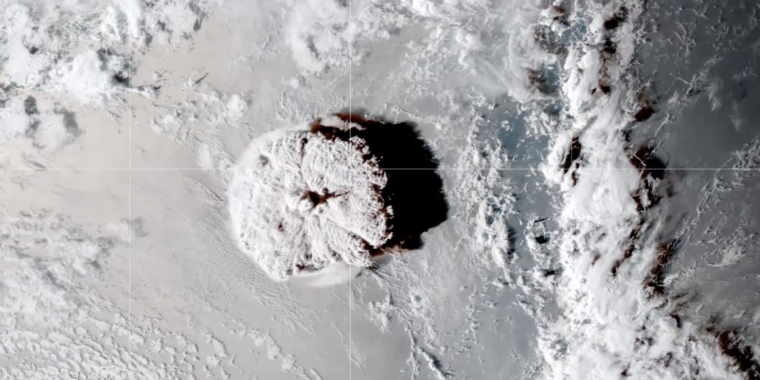
A plume of material was blasted straight through the stratosphere and into the mesosphere, over 50 km above the Earth's surface.
Hunga Tonga may be the largest eruption we've ever documented that took place under water, and the eruption plume contained unusual amounts of water vapor—so much of it that it actually got in the way of satellite observations at some wavelengths.
A balloon from Fiji was the first to take instruments into the eruption plume, doing so less than 24 hours after Hunga Tonga exploded.
But shortly after, the plume started showing up along the east coast of Australia, which again registered very high levels of water vapor.
Compared to normal background levels of stratospheric water vapor, these radiosondes were registering 580 times as much water even two days after the eruption, after the plume had some time to spread out.
Using some of these readings, the researchers estimated the total volume of the water vapor plume and then used the levels of water present to come up with a total amount of water put into the stratosphere by the eruption.
The researchers suspect that the huge amount of water in the eruption proper kept a lot of the sulfur dioxide from ever reaching the stratosphere.Overall, the conclusion seems to be that it really makes a big difference when an eruption takes place under water.Eruptions like Hunga Tonga are going to be rare in comparison to land-based eruptions, because the eruption has to take place in relatively shallow water in order to blast material all the way to the stratosphere.
